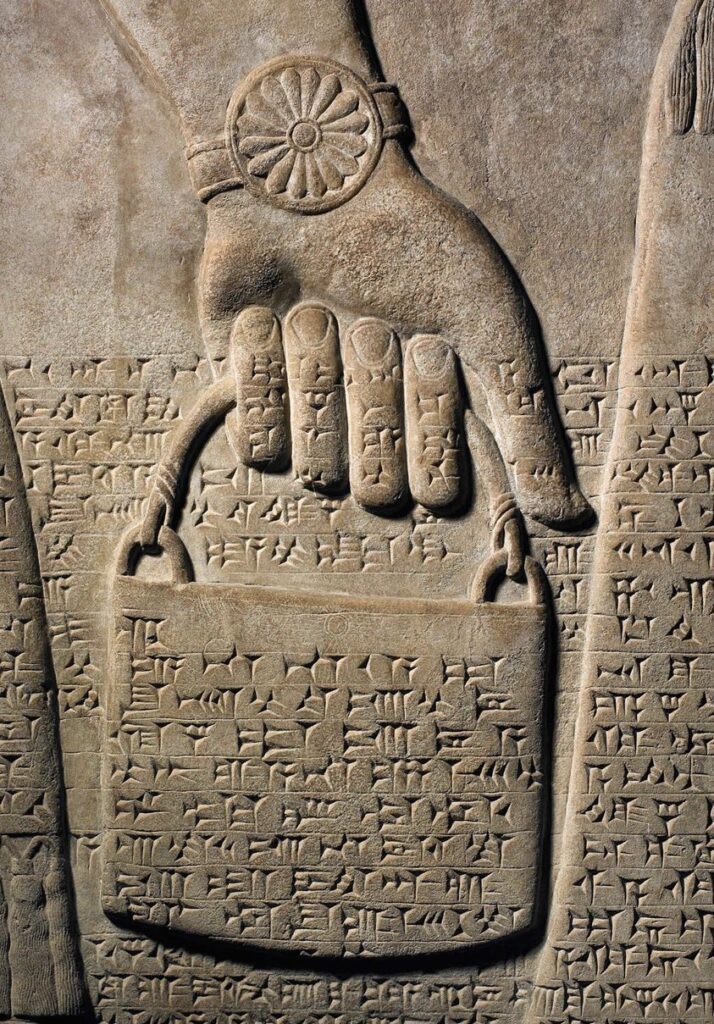
The Walters Museum of Art translates Apkallu as a “winged genius”; other museums which have wall panels from the palace of King Ashurnasirpal II describe Apkallu as a “sage,” or a “genie.” These ripped, winged humanoid figures stood at the entrance of doorways in the palace, offering blessings or protection to passersby with a pine cone dipped into a small bucket of anointing liquid.

There is obviously much that can be said about Apkulla style: the feathered or fishskin cloaks; the fringed kilts; the beards, the workout, the armbands; the daggers; the horned diadems; the earrings; the rosette-covered wristbands. For starters, let’s just look at the bucket, or as Reddit is fond of calling it, the Handbag of the Gods.
Continue reading “Apkullacore”